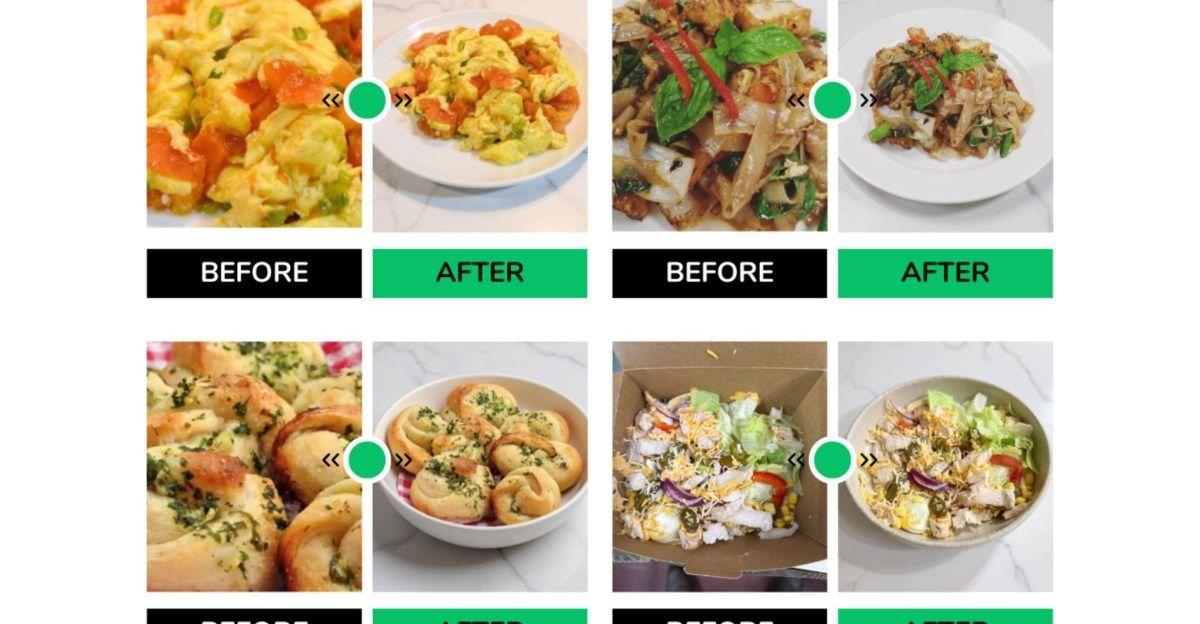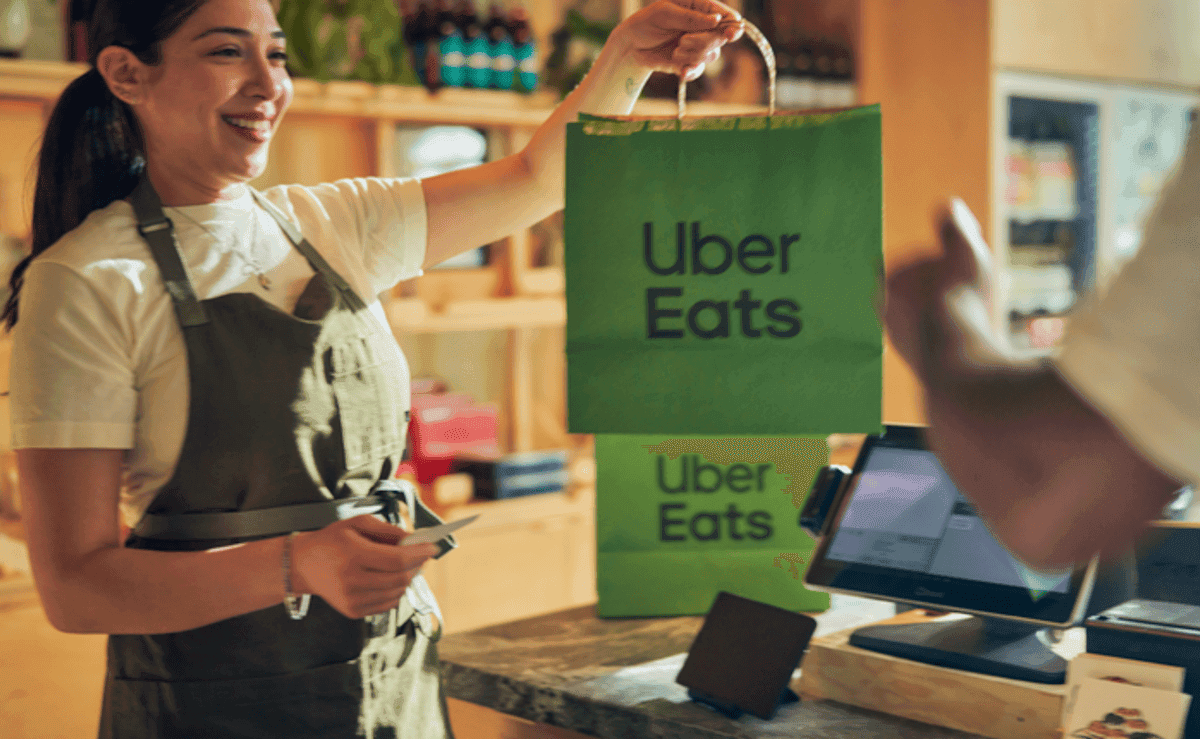Uber Eats Introduces AI-Powered Features to Enhance Restaurant and Customer Experience
4 Sources
4 Sources
[1]
Uber Eats Is Giving You a Taste of AI With These New App Features
The food delivery service, powered by ride-share comoany Uber, shared a statement on Thursday about the rollout of AI features for restaurants and customers. A few of the updates bring Uber Eats in closer competition with DoorDash, which already has a few of Uber Eats' new features. AI won't control every part of your ordering and delivery experience, but you can expect to se some changes. Here's what we know. There are a few features that restaurants may find helpful. Uber Eats will use AI to summarize customer reviews for restaurants to understand customer feedback, create menu descriptions and enhance low-quality images of their dishes. Uber Eats says merchants will be able to review and approve any content before it appears on the app. Aside from features for restaurants, Uber Eats is introducing a few features for customers. You'll be able to take a photo of your dish to use if the restaurant doesn't have a menu item for it yet. In exchange, you may get Uber Cash if your photo is chosen. This applies to US, Canada, Mexico and UK customers, and only for select dishes. US customers can get $3 in Uber Cash per chosen photo. Usually, customers will need to communicate with Uber Eats, instead of the restaurant, for any issues. But Uber Eats' new AI live order chat will let the restaurant directly communicate with customers once the order is received. The goal is to prevent any order or delivery issues before they arise -- such as special requests or allergy preferences. The AI features are available now via the Uber Eats app for both merchants and customers.
[2]
Uber Eats is adding AI to menus, food photos, and reviews
The AI tools can be used to generate descriptions for menu items and summarize customer reviews to quickly highlight feedback regarding areas of the business that need improvement. Uber Eats also says it's using AI to "detect and enhance low-quality food images" on menus, either by making changes to lighting, resolution, and framing, or editing the food onto different plates or backgrounds. The example images provided by Uber Eats suggest that this feature may also use generative AI to make adjustments to the food itself, such as expanding it or filling in any gaps when digitally re-plating.
[3]
Uber Eats is stuffing AI slop into your meal
Uber Eats has added a slate of designed to, theoretically, help merchants earn new customers and ease the shopping experience for users. AI-enhanced food images are intended to make dishes more appealing by improving photos uploads. In the , Uber Eats shows an example in which pictures captured very close to the food are transformed into wider field-of-view shots of plated dishes. Because the tool creates portions of the image that were not there before, its accuracy remains to be seen. Menu descriptions will also get the AI treatment with the idea being to ensure their accuracy so that customers feel more confident in what they're ordering. It will also summarize restaurant reviews, with the goal of highlighting areas for improvement as well as strengths. Much like the generated images, the jury is still out on if these tools will be useful, or another vector for . Uber is inviting users to send photos of delivered food for items that lack menu images. Customers in the United States, Canada, Mexico and the United Kingdom can earn $3 in Uber Cash for their pictures. "Live order chat" will finally allow merchants to initiate conversations with customers once an order has been placed.
[4]
Uber Eats Debuts AI Features for Restaurants | PYMNTS.com
By completing this form, you agree to receive marketing communications from PYMNTS and to the sharing of your information with our sponsor, if applicable, in accordance with our Privacy Policy and Terms and Conditions. The new offerings, introduced last week, allow restaurants to use AI to analyze customer reviews, auto-fill menu descriptions and enhance food photos. "We're using AI to detect and enhance low-quality food images -- improving lighting, resolution, framing, and plating -- to help restaurants showcase their dishes more accurately while elevating the customer experience from discovery to checkout," the company wrote on its blog. The review summary feature, meanwhile, lets restaurants draw insights from customer reviews. It highlights strengths and areas for improvement. The AI-generated item descriptions can help restaurants "to complete their menus, while also helping customers feel confident in their choices," the blog post added. Uber Eats has also introduced new tools for customers, such as the ability to post an image of a dish they had delivered if the item does not yet have a menu image, and a tool that lets merchants chat directly with diners after an order is received. "Live order chat can help improve order accuracy by enabling real-time communication to confirm replacements for out-of-stock items, clarify special requests, and check in on dietary or allergy preferences," the blog post said. Uber Eats' increased use of AI is happening as this technology is placing a larger role in the dining industry, as covered here last month. The smart restaurant robot industry is expected to exceed $10 billion by the the decade's end, helped along by deployment in applications like delivery, order-taking and table service, according to Archive Market Research. Restaurants are also using AI to cover their administrative needs, with additional PYMNTS Intelligence research showing that close three-quarters of eateries say AI is "very or extremely effective" in accomplishing business goals. "Robots are taking more active roles in both customer-facing and back-kitchen tasks, as restaurants face a perfect storm of challenges that include rising labor and food costs, persistent workforce shortages, and growing consumer demand for efficient service," PYMNTS reported last month.
Share
Share
Copy Link
Uber Eats rolls out AI-driven tools for menu descriptions, image enhancement, and review summaries, aiming to improve the food delivery experience for both restaurants and customers.
Uber Eats Introduces AI-Powered Features
Uber Eats, the food delivery service powered by ride-share company Uber, has announced the rollout of several artificial intelligence (AI) features aimed at enhancing the experience for both restaurants and customers
1
. These new tools bring Uber Eats into closer competition with rivals like DoorDash, which already offers similar features.AI-Enhanced Restaurant Tools
The new AI-powered features for restaurants include:
- Review Summaries: AI analyzes customer reviews to provide restaurants with insights into their strengths and areas for improvement
2
4
. - Menu Description Generation: AI assists in creating accurate and appealing descriptions for menu items
2
4
. - Image Enhancement: AI detects and improves low-quality food images by adjusting lighting, resolution, framing, and even digitally re-plating dishes
2
3
.
Uber Eats emphasizes that merchants will have the ability to review and approve any AI-generated content before it appears on the app
1
.
Source: The Verge
Customer-Focused AI Features
For customers, Uber Eats is introducing:
- User-Generated Images: Customers can submit photos of dishes that don't yet have menu images. In the US, Canada, Mexico, and the UK, users may receive $3 in Uber Cash if their photo is chosen
1
3
. - Live Order Chat: This feature enables direct communication between restaurants and customers once an order is received, aiming to prevent issues related to special requests or allergy preferences
1
4
.
AI in Food Photography
One of the most notable features is the AI-powered image enhancement tool. Uber Eats claims this technology can significantly improve food photos by:
- Enhancing lighting and resolution
- Adjusting framing
- Digitally re-plating dishes
- Potentially using generative AI to make adjustments to the food itself
2
3
While these enhancements aim to make dishes more appealing, some concerns have been raised about the accuracy and potential for misrepresentation
3
.Related Stories
Industry Impact and Future Outlook

Source: PYMNTS
The introduction of these AI features by Uber Eats reflects a broader trend in the restaurant and food delivery industry. The smart restaurant robot industry is expected to exceed $10 billion by the end of the decade, with AI being deployed in various applications such as delivery, order-taking, and table service
4
.Research indicates that nearly three-quarters of restaurants find AI "very or extremely effective" in accomplishing business goals. This adoption comes as the industry faces challenges including rising labor and food costs, workforce shortages, and increasing consumer demand for efficient service
4
.Availability and Implementation

Source: Engadget
The new AI features are now available via the Uber Eats app for both merchants and customers
1
. As these tools are implemented, their effectiveness and impact on the food delivery experience will likely be closely monitored by both the industry and consumers alike.References
Summarized by
Navi
[3]
Related Stories
Uber Eats Enhances User Experience with AI-Powered Features and Customer Incentives
01 Aug 2025•Technology

McDonald's Leads Fast Food Industry in Massive AI Implementation Across 43,000 Locations
07 Mar 2025•Technology

Yelp Unveils AI-Powered Voice Agents and Enhanced Features for Restaurants and Service Providers
29 Apr 2025•Technology

Recent Highlights
1
AI Chatbots Sway Voters More Effectively Than Traditional Political Ads, New Studies Reveal
Science and Research

2
OpenAI declares code red as Google's Gemini 3 gains 200 million users in three months
Technology

3
Trump approves Nvidia H200 chip exports to China with 25% revenue cut, defying Senate concerns
Policy and Regulation





